How To…Use Masking Fluid
In the first of our monthly ‘how to’ series we are taking a look at watercolour masking fluid. Masking Fluid is such an invaluable tool to add lots of exciting marks, intricate detail and fine lines. However it is often overlooked as it appears difficult to use. In this article I share some simple tips to overcome these difficulties and give you some confidence to give masking fluid a go.
What is watercolour masking fluid?
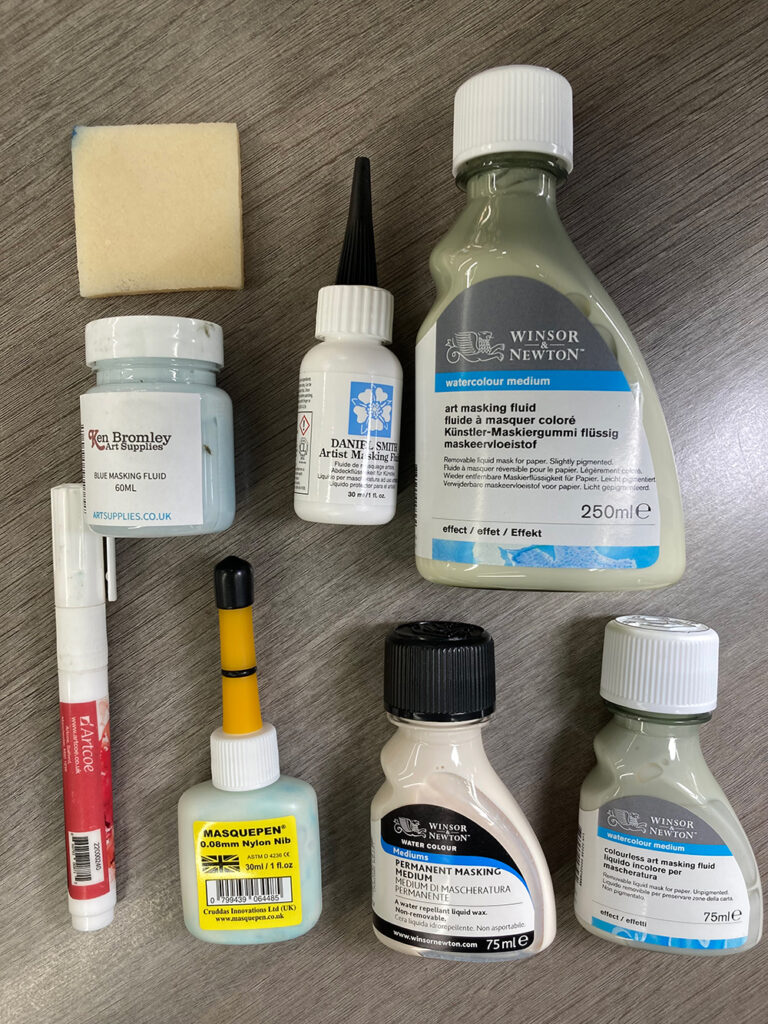
Unlike other media, the whites in watercolours are not usually added as paint but are bare areas of the paper that are not painted on. White is the colour of the paper. Watercolour masking fluid is a liquid substance used by watercolour artists to create crisp, clean edges and preserve parts of the paper from watercolour paint. It is typically made from latex rubber or a latex-based compound and is usually tinted for visibility while applying. It is applied to the paper before painting, and once the paint is dry, the masking fluid is peeled or rubbed off, revealing the untouched paper beneath. Masking fluid can be added on top of a dry wash too to retain the colour underneath.
There are a couple of exceptions to note; Winsor & Newton make Colourless Masking Fluid and Permanent Masking Fluid. Colourless Masking Fluid is as the name implies clear when dry. This is particularly handy when using sensitive papers as there is a chance that the tint in regular masking fluid can stain the paper. Permanent Masking Medium, unlike regular Art Masking Fluid, is not removable. Tint it with watercolours and use it to isolate areas of fine detail. For example tint with brown watercolour paint and draw a fence line in a landscape before painting your wash.
How is it applied?
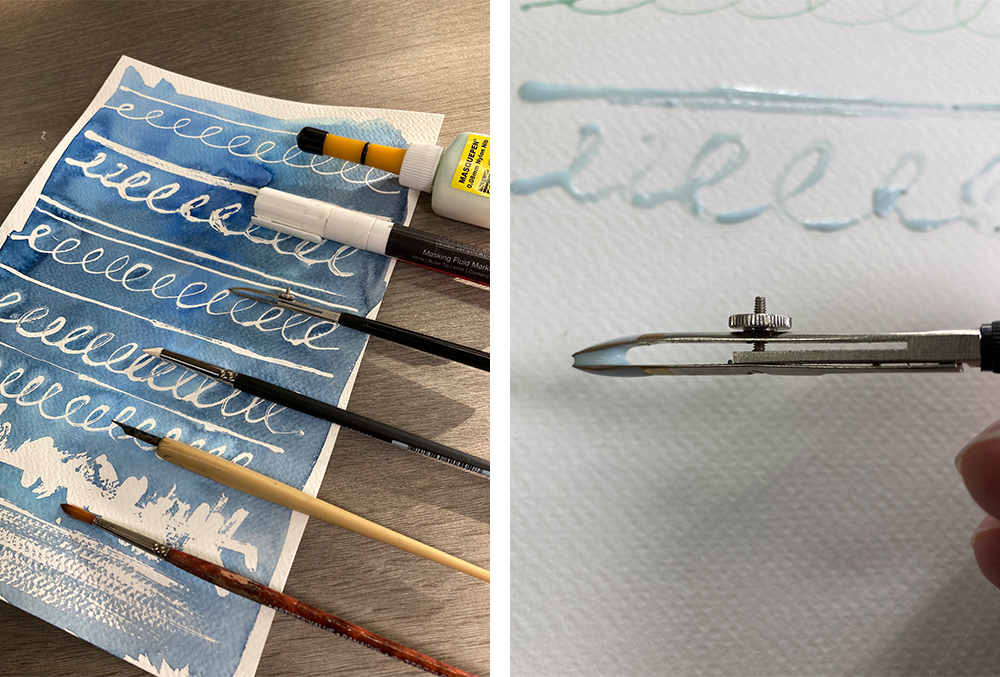
Masking Fluid is available in various formats from bottles and fineliners to marker pens. If you are wanting to protect a large surface area then consider using Frisket Film rather than masking fluid.
Tools like old brushes, dip pens, colour shapers, toothbrushes, ruling pens or rolled up paper are useful when applying masking fluid from a bottle. Toothbrushes create fine splatters suitable for creating the texture of a sparkly sea or a galaxy sky. Ruling pens are great for fine lines. Control the width of the line by adjusting the dial on the side of the pen. Colour shapers used in pastel paintings are handy to make dots and small shapes. In the image below I’ve used a mini sponge roller to apply the masking fluid. This technique works particularly well to create grungy, distressed texture in between layers of washes.
If using a brush I suggest you use a cheap or old brush exclusively for masking fluid because the latex might not come out completely and it will shorten the brush’s life. Make sure you thoroughly clean your brush with soap & water afterwards. Zest-It Masking Fluid Remover will remove dried masking fluid from brushes. It will even remove dried masking fluid from clothes or equipment.
Tips for applying masking fluid
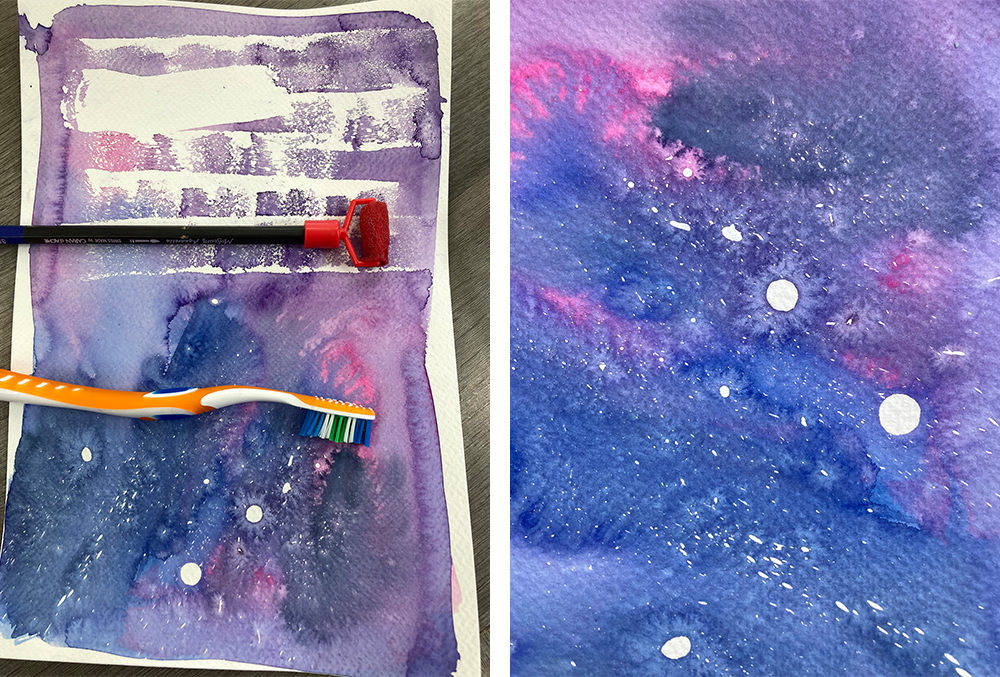
Step 1
Think about the kind of marks and texture you want to create and the size of the area you want to mask off. Then select a tool that’s right for the job. The tool must be dry and the watercolour paper must be dry. Apply the masking fluid. Always remember to put the top back on the masking fluid when it’s not in use as it’s very fast drying.
If you are using a paper for the first time I advise you test the masking fluid first. Apply to a scrap piece of the paper and check the paper is not damaged when the masking fluid is removed.
Water the masking fluid down if it’s too thick, test the thinner fluid on a piece of scrap paper first. I watered down the masking fluid to create the galaxy sky effect with a toothbrush (see image above).
Step 2
Wait until the masking fluid is completely dry before starting your painting.
Step 3
Once your painting is completely dry, remove the masking fluid (see below). Masking fluid can leave hard edges on your painting. If you have used a non staining pigment then you could soften the line by gently lifting it with a damp brush.
How is masking fluid removed?
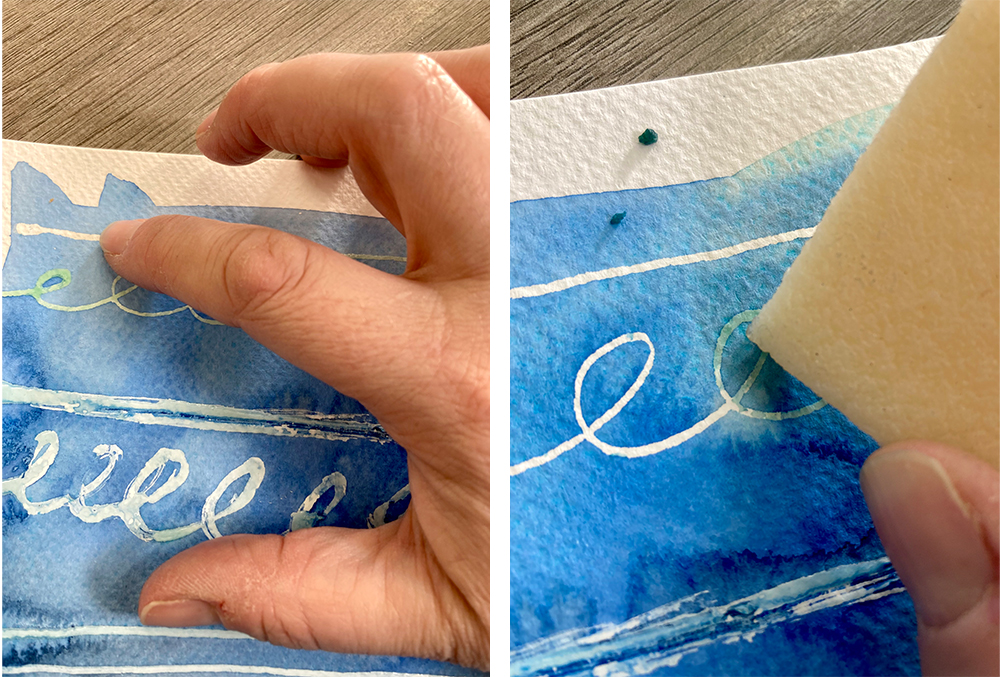
After the watercolour paint has dried completely, the masking fluid is gently rubbed or peeled off. Some artists use an eraser (like the Frisk Maskaway Masking Fluid Remover Block) to remove masking fluid from smaller areas. It’s crucial to be careful during the removal process to avoid damaging the paper. Avoid leaving masking fluid on paper for an extended period. It may bond more strongly to the paper over time and become difficult to remove without tearing the paper – I know from personal experience!
If you are now feeling more confident why not test out your new found skills with this sailing boats tutorial?

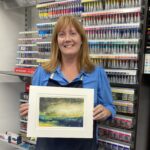
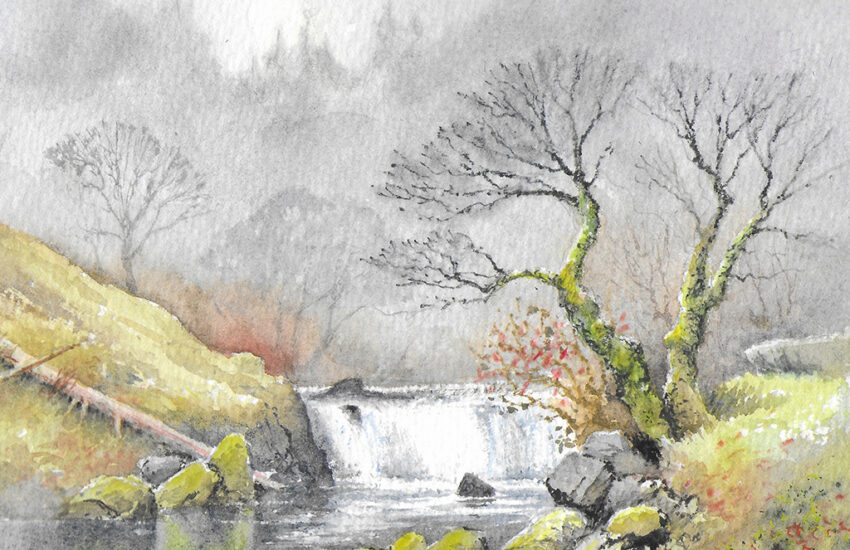

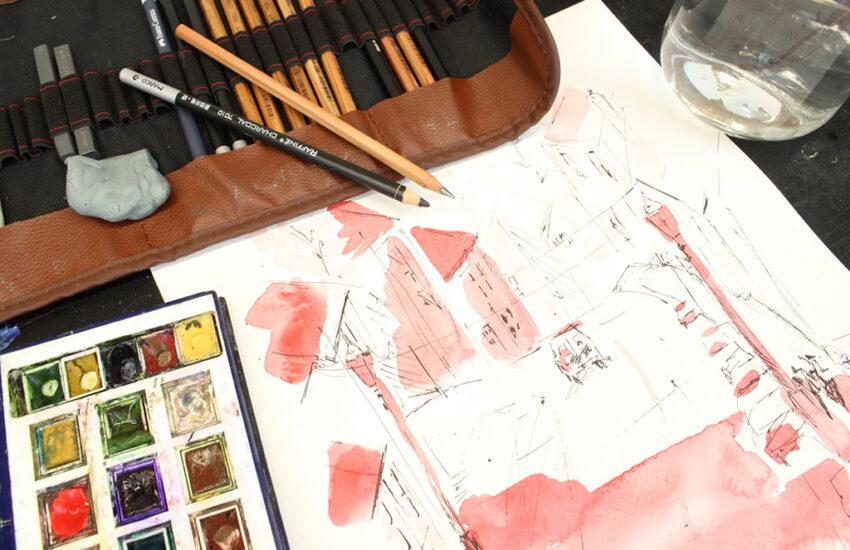
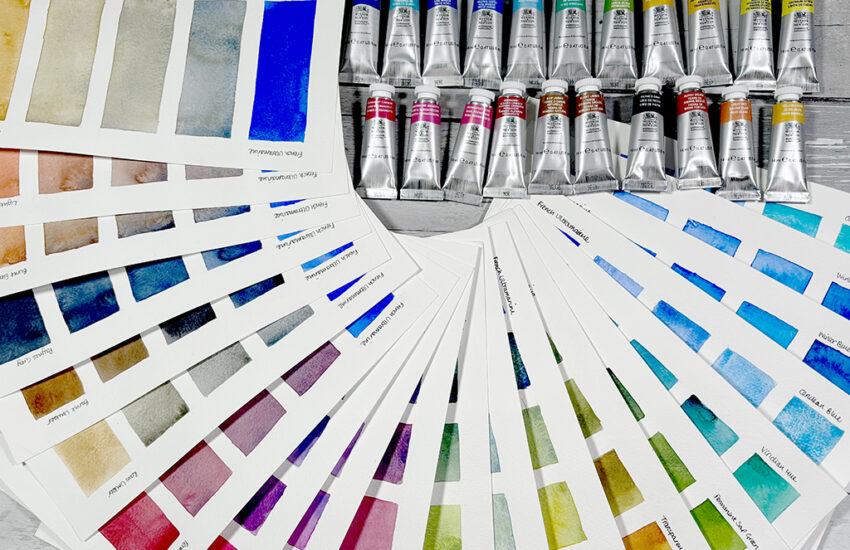
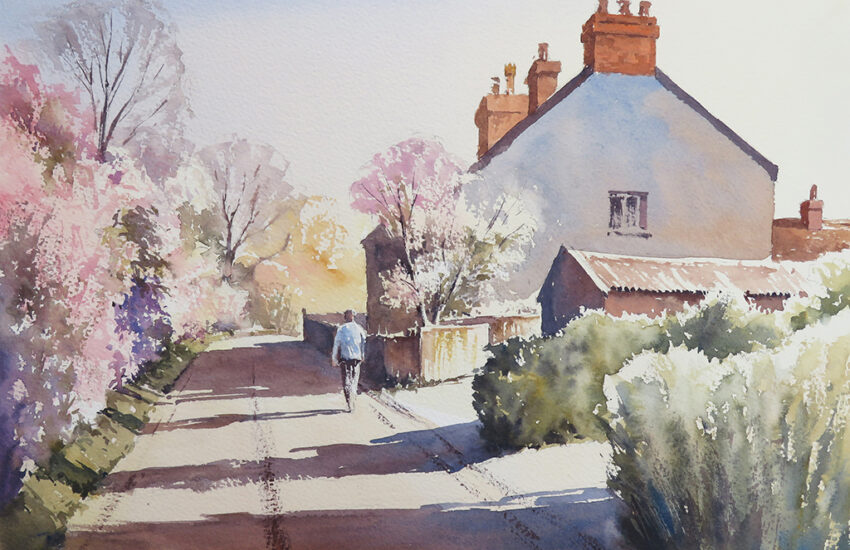
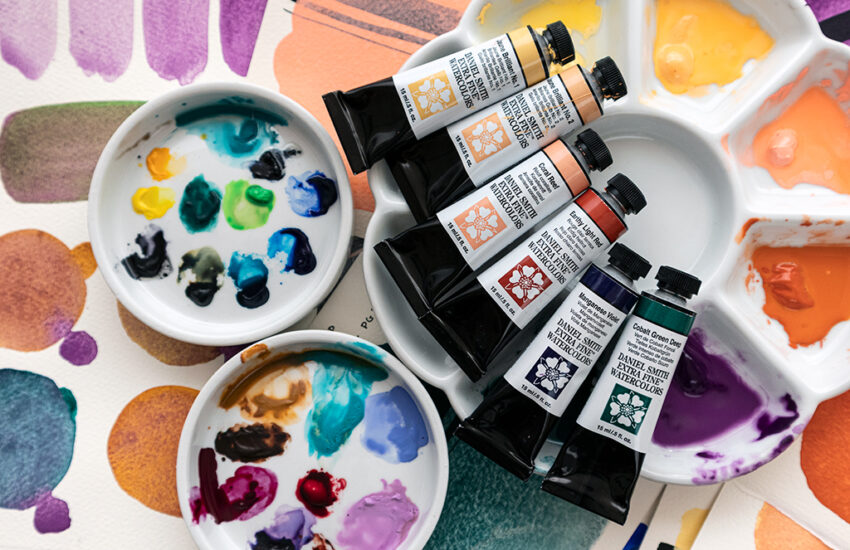


Like the new logo design. Enjoyed reading Liz’s blog about using masking fluid – keep it up!
Useful to remind people not to leave the masking fluid on too long. I’ve been caught out when going back to unfinished work and been unable to remove the masking fluid.
Don’t get it on your clothes!!!
A very usefull blog on masking fluid
If you dip your brush into washing-up liquid before putting it into the masking fluid the mf will not damage the brush at all and can be easily removed. You can even use your very best sable brushes without any fear of damage.